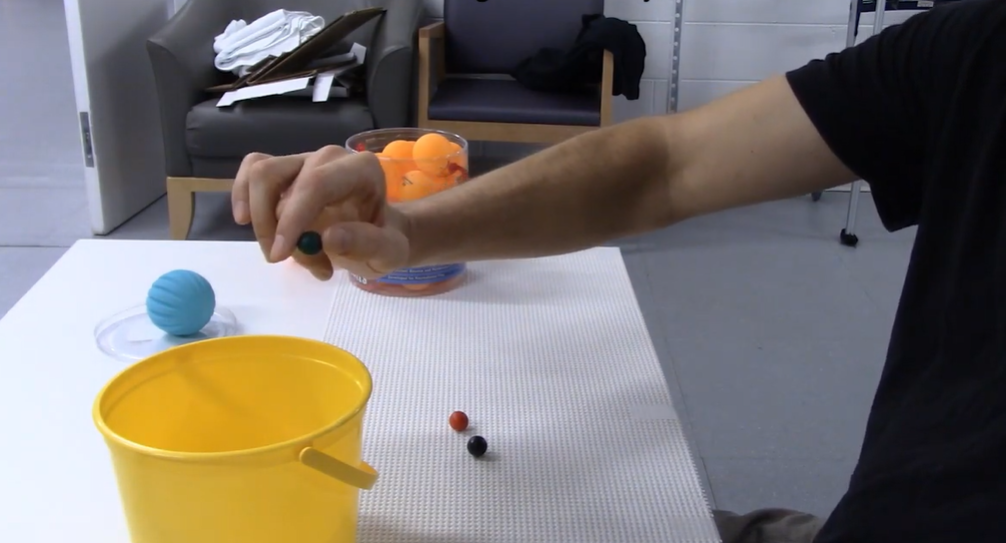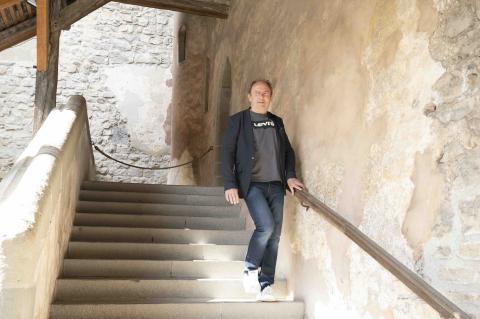Non-invasive electrostimulation device improves arm and hand function in quadriplegic patients
A clinical trial involving 60 people with upper and lower body paralysis showed that a non-invasive electrical spinal cord stimulation device - called ARCEX - helps improve hand and arm function in quadriplegic patients. The study, the results of which are published in Nature Medicine, showed that 43 of the people with paralysis experienced improved arm and hand strength and function after receiving electrical stimulation along with rehabilitation exercises.

Eduardo Fernández - ARCEX estimulación EN
Eduardo Fernández
Director of the Institute of Bioengineering at the Miguel Hernandez University of Elche and director of the Biomedical Neuroengineering group at the Center for Biomedical Research Network on Bioengineering, Biomaterials and Nanomedicine (CIBER-BBN)
Cervical spinal cord injury often results in permanent impairment of the functions of the arms and hands, and this has a major impact on the quality of life of those affected. One of the main obstacles to developing effective therapies in this field is the limited repair and regenerative capacity of the central nervous system.
This study introduces a new non-invasive therapeutic strategy to restore some of the functions lost as a result of spinal cord damage. The treatment consists of applying electrical stimulation to the area of injury while rehabilitation activities are performed. This is done using external electrodes placed above and below the lesion.
The study is well designed and of high quality. It has been conducted in patients with incomplete spinal cord injury of more than 12 months' duration. This is important because the effects of rehabilitation are often very limited once the chronic phase of tetraplegia is reached. The results show that 72% of patients achieve significant improvements in arm muscle strength and hand grip ability with electrical stimulation. In addition, the researchers found no significant adverse effects and the treatment also appears to induce an improvement in sensory function below the level of the lesion. However, it should be noted that there is no control group and it is not a randomised trial, so further studies are still needed to confirm the effectiveness of this new therapeutic approach and to identify those patients who could benefit most from this treatment. In this context, it should be borne in mind that there is great variability in the motor functions of people with tetraplegia and that the mechanisms responsible for the improvements induced by electrical stimulation are not yet well understood.
The future is bright and we must be prepared to include these new therapies in the routine clinical treatment of patients with spinal cord injury. However, it is necessary to move forward slowly and not to raise false expectations.
Antonio Oliviero - ARCEX estimulación EN
Antonio Oliviero
Head of the Neurology Service at the National Hospital for Paraplegics (Toledo) and Head of Research and Innovation at the Los Madroños Hospital (Madrid)
This is an excellent quality study on a relevant technological advance: transcutaneous (non-invasive) cervical spinal cord electrical stimulation associated with rehabilitation is safe and could be effective. It should be noted that the study has no comparator, i.e. there is no group [of patients] that does only rehabilitation or only stimulation or simulated stimulation.
It is a technology that is easy to implement and can probably be implemented in a short time - 1 to 3 years - in clinical practice. Research continues to advance, improving each time the treatment of spinal cord injury, but we are still far from a cure.
Cofundador de Neurek SL y de Sinfatin SL.
Chet Moritz et al.
- Research article
- Report
- Clinical trial
- People



